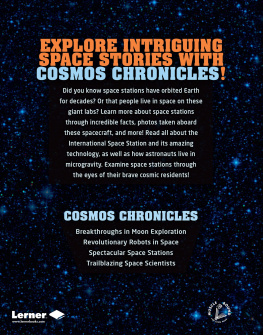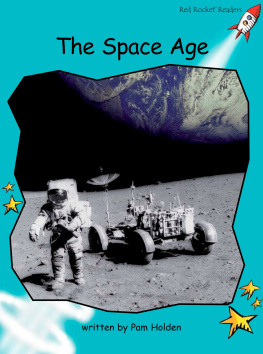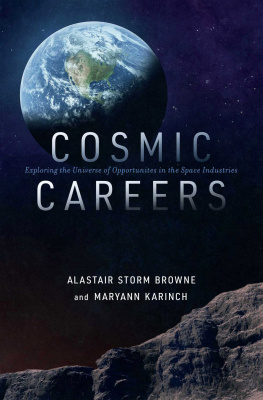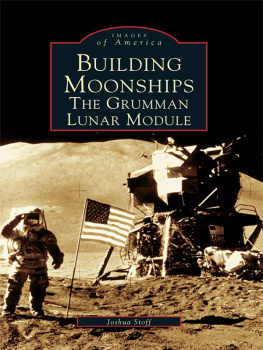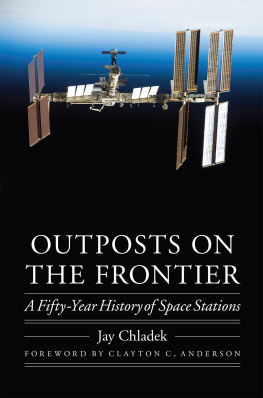There are some who label Mr. Bigelow (no one calls him by his first name) an eccentric. After all, this is the guy who once gave an estimated US$10 million to fund the unidentified flying object (UFO)-hunting National Institute for Discovery Science (NIDS). He also bought a 480-acre cattle ranch in Utah that some believe is the site of an inter-dimensional doorway used by alien shape-shiftersa subject well get to shortly. But, eccentric or not, what cannot be denied is that Bigelow is rich. Very rich. While Bigelow has never been on the Forbes 400 richest people list, Forbes estimates the Las Vegas natives real estate empire is worth US$700 million, thanks to the Budget Suites chain of residential hotels and more than 14,000 apartment and office units Bigelow owns across the South-West. Today, Bigelow (Figure ), who made his fortune building affordable places to stay on Earth, is looking to do the same in spaceby building high-tech, low-cost inflatable space stations. In the last 15 years, he has spent US$210 million of his personal fortune and says he will spend up to US$500 million to prove that space is a safe place for entrepreneurs.
1.1
Robert T. Bigelow. Courtesy: Bill Ingalls/NASA
Bigelow: From Budget Suites to BEAM
Bigelow grew up in Las Vegas, a town as unique as the self-made millionaire. In the 1940s and 50s, Vegas was a place where it was possible to witness rocket launches and even the occasional nuclear weapons test. It was also a place where strange events occurred, which perhaps isnt so surprising given that Sin City is only a two-and-a-half-hour drive from the mysterious Area 51. One such event took place in 1947 when Bigelows grandparents were driving across Mount Charleston near Las Vegas and witnessed a UFO approach their car. When the young Bigelow heard the tale, it sparked an interest in the paranormal (hes never had a close encounter) and space, although Bigelow never aspired to become an astronaut and he never wanted to work for NASA. Bigelows dream was to explore the universe on his own terms, which meant he needed to make money, and a lot of it. Bigelows father was a broker, so real estate seemed a viable route to wealth. To that end, Bigelow studied real estate and banking at Arizona State University, graduating in 1967. Then he got to work. He began by borrowing US$20,000, using the money to buy small rental apartment complexes. Three years later, he owned about 100 apartments in Las Vegas and had begun work on a 40-unit apartment building. He was only 26 years old. The apartment building was followed by several more, which eventually became a chainBudget Suites of America. Founded in 1988, Budget Suites of America is a chain of extended-stay hotels offering apartments for rent by the week. The convenience and affordability of a Budget Suites hotel mean theyre popular with the temporary or migrant workers who work in The Strips hotels and casinos. In addition to making enough money to establish Bigelow Aerospace ( www.bigelowaerospace.com ), the Budget Suites business model provided a template for Bigelows space stations that would also be designed to be cheap, efficient, and available for monthly lease.
I met Bigelow in 2005 in Las Vegas to talk about astronaut training. He had arranged for us to have lunch at Marie Callenders (Bigelow is a fan of their cheesecakes) on Rainbow Boulevard. Bigelow arrived in a black SUV, a tall, trim 60-year-old with a full head of silvery-black hair wearing crisply pressed beige slacks and a short-sleeved dress shirt. Over the next hour, he talked about the challenges of the International Trade on Arms Regulations (ITAR) and his strategy for overcoming the lack of affordable transportation options for getting humans into space and to his habitats. To say the guy was knowledgeable about manned spaceflight and aerospace technology is an understatementI could have been talking to a NASA engineer. He was very clear about the elements needed to make his aerospace dreams a realitya master plan that will mass produce inflatable space stations and, in so doing, revolutionize human access to space. Since our meeting, his company has gone from strength to strength and one of his BEAM (Bigelow Expandable Activity Module) habitats is due to be attached to the International Space Station (ISS) in 2015. Way back when Bigelow started talking about inflatable habitats, there were many who thought the scheme preposterous. But for Bigelow, born, raised, and still living in the worlds most preposterous city, such a goal was anything but. After all, Vegas was built on the proposition that, if youve got the money, you can create anything you want. Recreate Venice, complete with indoor canals? No problem. A beach with a wave machine so tourists can body surf in the middle of the desert? Done. A privately owned, inflatable space station? Why not?
The UFO Connection
I have a huge concern how the American people are going to react to the first contact. How many people are going to go to the gun shop? How many are not going to go to work?
Robert Bigelow
Those of you who follow Bigelow Aerospace will no doubt have noticed the companys logoan iconic large-eyed alien that is also prominent on the companys Mission Control screens. To those in the UFO community, Bigelow is a familiar name, having doled out millions of dollars to fund research into alien abductions and UFO sightings. His interest in the phenomenon can be traced back to the experience related to him by his grandparents who witnessed a UFO. At first they thought it was an airplane on fire, but it was moving much faster than an airplane, and its light filled their windshield before making a right-angled turn and shooting off into the sky. Bigelow first heard this tale when he was 10. There are some who suggest one of the reasons hes so eager to start orbiting his space stations is to get one step closer to making contact. There are others who claim he fears that UFOs may interfere with his space stations and yet others who contend Bigelow believes that UFOs may harbor secrets of propulsion that his engineers might be able to put to good use! Whichever rumors you choose to believe, the fact is that Bigelow has been engaged with the UFO community for some time. For example, he was the principal sponsor of the Las Vegas-based NIDS from its founding in 1995 until it was placed on inactive status in 2004the NIDS staff included several PhDs and ex-FBI agents who researched alien abductions, out-of-body experiences, cattle mutilations, and other paranormal phenomena. The NIDS website is still up ( www.nidsci.org ) but has not been updated since 2004. It reports UFO investigations, alleged cattle mutilations, and other extraterrestrial-related events. Perhaps the most controversial project undertaken by NIDS was its purchase of a ranch in Utah, which some describe as a hyper-dimensional portal. The ranch is said to be infested by an alien creature known as Skinwalker, taking its name from Native American legends similar to European legends about werewolves. NIDS researchers investigating the ranch with sophisticated electronic equipment failed to obtain any actual proof that anything unexplainable was going on. Bigelow has also met with more than 200 people who claim to have witnessed aliens and, in 1997, he donated US$3.7 million to the University of Nevada, Las Vegas, to create a Consciousness Studies program, which offered classes about near-death experiences and psychic phenomena.






